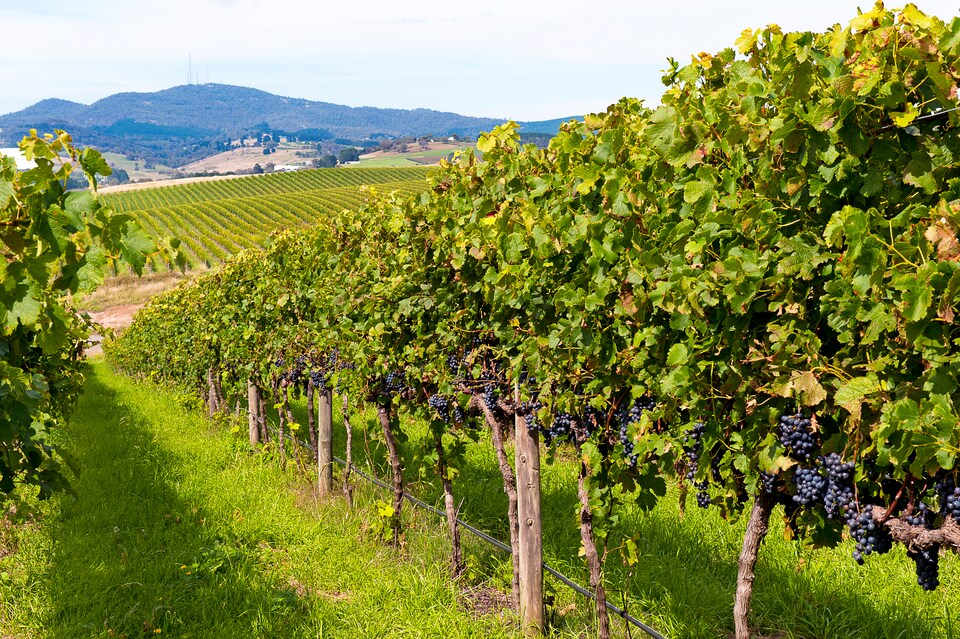Chasing the Best Chardonnay: The World-Class Wines of Orange.

Chardonnay is Australia’s most widely planted white wine varietal but to this day, remains divisive amongst consumers. There are many, like me, who regard it as the most regal of white wine varietals. But there are plenty of rather vocal haters – like my friend Jenny, who swears that she wouldn’t ruin her risotto by pouring in a splash of the varietal. Perhaps it’s a palate thing; or maybe it harks back to the chardonnays of the 1980’s when the styles were so rich, ripe and any semblance of fruit was wiped out by the heavy-handed use of oak. Or perhaps the image problem was exacerbated in the early 2000’s by Kath and Kim publicly bagging “kardonnay” on national television? But these days, Australian chardonnay is a very different creature, and our talented crop of new generation winemakers are shooting the lights out with modern examples of the wine.
There are exceptions to every rule, and so it is with the chardonnay grape. I’d like to say that the best chardonnays are being made in cool climate regions these days; but then there’s places like the Margaret River in the west which has a maritime climate and makes some world beating ‘chardies’ for the ages! But for the sake of the argument, I’d say that most of the nation’s best chardonnay producing regions enjoy a “cool” or “cooler” climate – places like the Adelaide Hills, Tasmania, Yarra Valley and perhaps controversially, Orange in NSW.
The Orange wine region is unusual for many reasons, one of which is that it is the only wine region in Australia defined by elevation – to be considered Orange GI (Geographic Indication) the vineyards must be above 600m and within the City of Orange or Shires of Cabonne or Blayney, as otherwise, it’s classified as Central Ranges. Its uniqueness is contributed to by its elevation and the positioning of vineyards as high as 1100 metres above sea level in the lap of a majestic extinct volcano, Mount Canobolas – the highest peak between the Blue Mountains and the Indian Ocean. It’s here that some truly spectacular chardonnays are being crafted and many of them are flying under the radar and far from fully priced.
During a recent visit to the region I swished, swirled, sniffed, and sipped dozens of locally made wines with a view to narrowing it down to the best of the best. My list may be a little controversial as I’ve left out some big names like Phillip Shaw and his Hoosegg Chardonnay but here are my top 5 ‘chardies’ from Australia’s up-and-coming rockstar chardonnay region:
Canobolas-Smith Shine Chardonnay ($70) – I recently opened a bottle of the 2014 edition and it was up there with the best examples of the Burgundian classic white that I’ve ever tried. Despite age, the purity of fruit was remarkable, and the complexity, breathtaking. I understand that winemaker Murray Smith has sold the vineyards; here’s hoping that the new custodians of these extraordinary vineyards continue in Murray’s minimal intervention winemaking practices. Maybe it’s unfair to compare a wine with almost 10 years under its belt to the current releases of other winemakers, but I reckon it comes out on top.
Patina 2019 Reserve Chardonnay ($75) – I must admit that this creation of Gerald Naef surprised me, as I hadn’t been all that impressed with the white label I’d tried previously. I’m going to call it out as the best of the current vintages; textural, balanced and full of lees-contact character. The pretty butterscotch and creaminess across the palate is nicely corralled on the finale by fresh fruit, hints of French oak and natural acid. Close to its best already.
Mayfield Vineyard Premier “Thomas” Chardonnay 2022 ($65) – this small batch wine makes the top 5 list for its purity of fruit, austerity, and potential to develop into a world beater over the next 5 – 10 years. In its youth, this delicate wine delivers green citrus, honeydew and fuji apple notes, and oodles of cheek-sucking racy acids through the finish. Clean, fresh and vibrant, the 75% malo adds enough creamy texture to make it extremely approachable now, but I’m looking forward to cracking the stelvin again in 7 or 8 years’ time.
Matthew Atallah Block A2 Chardonnay 2018 ($55) – crafted by one of the region’s emerging talents, the A2 is a stunning expression of cool climate chardonnay – granitic cashew and spicy cantaloupe characters emerge with the first sniff and develop into stonefruit and hazelnut cream through the middle. There’s a lovely palate weight and a pristine finish highlighted by gentle acids and a lingering flintiness. One can’t help but love the yeasty lees and aged cheddar characters that peek their noses out on the conclusion. Sure to be a crowd pleaser.
Printhie Super Duper 2019 ($85) – a stupid name for such a prestigious wine, but the premium white wine of the region’s leading sparkling wine producer has to make the list for its spirited citrus fruits and purposeful balance. You can’t help but admire the mid-palate complexity as cashews meet nougat while nectarines and grapefruit wrestle for supremacy through the middle. It’s a mouth filling and heavier style that is richer and more opulent than you’d expect from a cool climate region.
With so many outstanding producers making quality Burgundian-style white wines, the foothills of Mount Canobolas seem destined for chardonnay inspired greatness. The generally smaller batches and lower yields make them a little more expensive than some other regions, though quality always comes at a price!
As published in the Courier Mail.